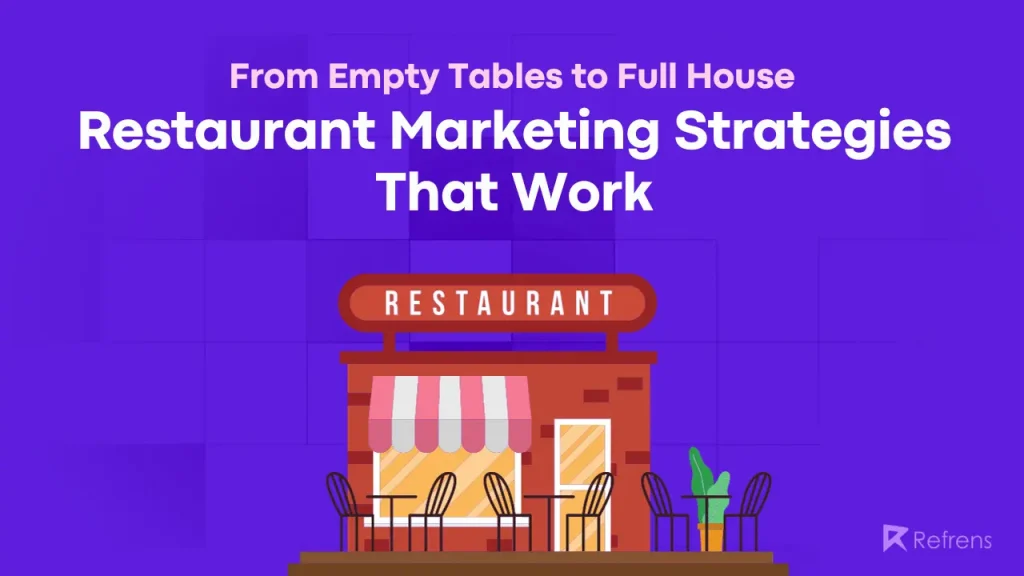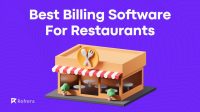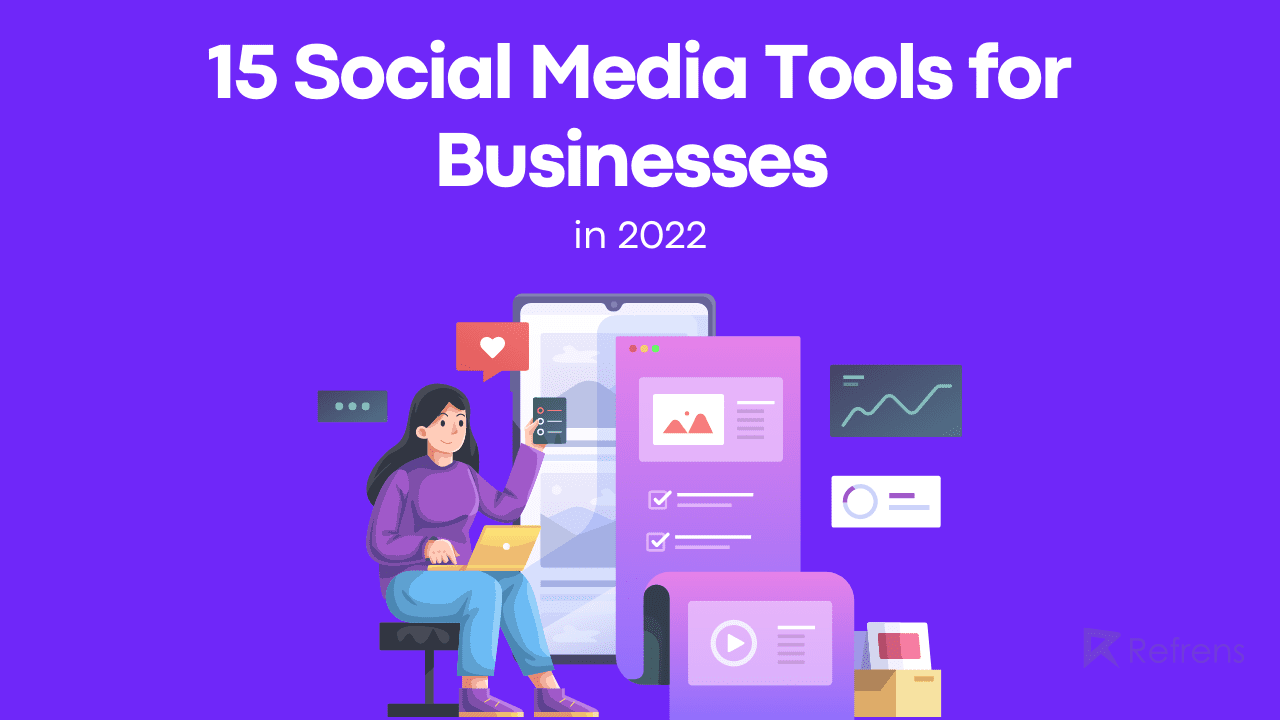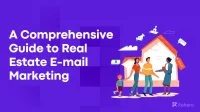Restaurant marketing strategies are essential plans that restaurant owners use to attract customers and grow their businesses. In today’s digital age, effective marketing is crucial for standing out in the competitive restaurant industry.
In this article, you will explore a variety of successful strategies. From creating a strong online presence to using SEO for local search, crafting engaging content, and implementing loyalty programs, you’ll discover the tools and tactics to help your restaurant thrive. If you’re ready to boost your restaurant’s success, read on to discover the recipe for effective restaurant marketing.
Know Your Target Audience
Understanding your restaurant’s target audience is a cornerstone of successful marketing strategies. It’s not just about getting more customers; it’s about getting the right customers through your doors.
To truly connect with your target audience, you need to identify their age groups, income levels, and lifestyles. This in-depth knowledge, often equated with a customer persona, allows you to tailor your marketing messages specifically to these segments. For example, if you discover a significant presence of young professionals in your area, you might consider promoting happy hour deals or quick lunch options to cater to their needs.
You can gather this data from the following sources:
- Customer Surveys: Create short surveys to gather preferences, dining times, and suggestions.
- POS Systems: Utilize POS systems for sales data, peak times, and menu insights.
- Social Media Monitoring: Social Media Monitoring includes listening to customer feedback and reviewing on social media platforms.
- Website Analytics: Use tools like Google Analytics to track website traffic and keywords.
- Email Surveys: Send post-dining surveys for feedback and preferences.
- Competitor Analysis: Study competitors’ promotions and menu trends.
- Loyalty Program Integration: Integrate loyalty programs with POS for customer insights.
- Reservation Platforms: Gather insights from reservation platforms for booking trends.
Don’t rely on guesswork when it comes to customer behavior. Utilize data analytics tools to gain insights into their preferences, peak dining times, and popular menu items. Use this data to refine your marketing strategies and capitalize on trends. More on that use menu maker to craft stunning menu for restaurant.
Get Active on Social Media
Social media is a critical element of your restaurant marketing plan. A great example of effective social media marketing for restaurants is Nusret Gökçe, famously known as Salt Bae. His rise to fame serves as an inspiration for restaurant owners looking to harness the power of social media.
You just need to check out Instagram to see how successful he’s been.
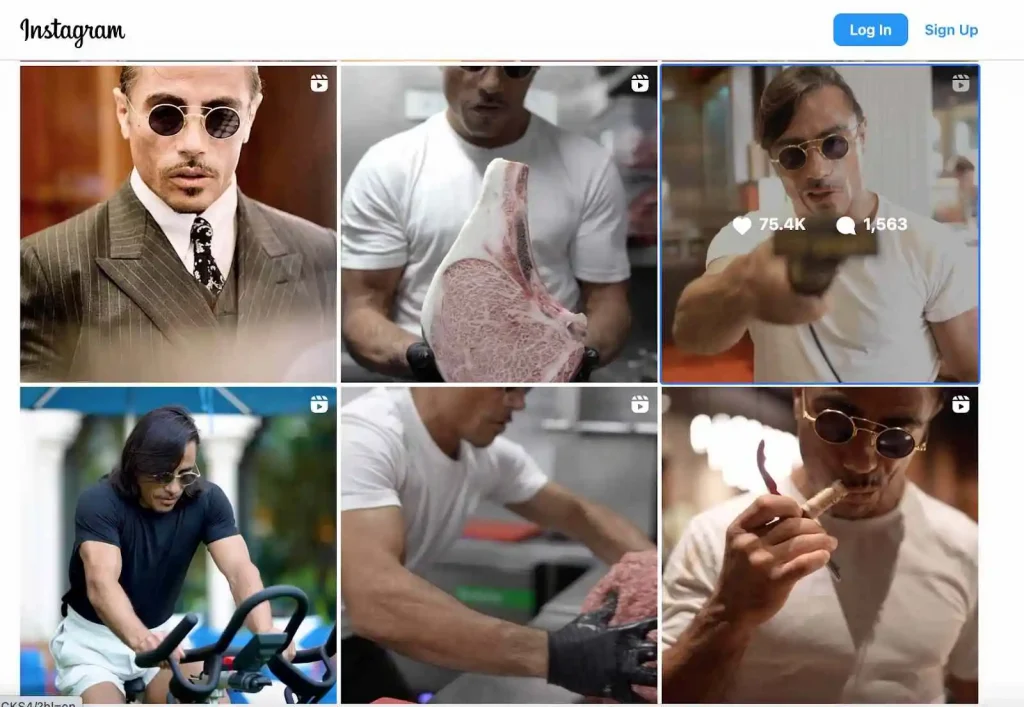
Love him or hate him, Salt Bae, with his charismatic and unique style of seasoning meat, became an internet sensation. He built a global brand around his restaurants from social media.
Here are a few of the things he did right:
- Charismatic Personal Brand: Nusret Gökçe has a distinctive and entertaining style. That’s become a key part of his brand.
- Consistent Content: Salt Bae maintains a consistent posting schedule, ensuring he is front of mind with his audience. His posts showcased his culinary skills and personality, fostering a strong connection with his followers.
- Viral Marketing: Salt Bae’s content goes viral through creative and attention-grabbing videos.
- Influencer Collaborations: Collaborating with influencers and celebrities further expanded his brand’s visibility.
Nusret Gökçe is a master of viral marketing. If you’re familiar with his name, you know his signature move. He theatrically sprinkles salt over a perfectly cooked steak by letting it cascade down his forearm. It’s over the top and great theater.
This visually striking and widely shared gesture showcased his culinary skills and passion, earning him the nickname “Salt Bae” and catapulting him to global stardom. He’s also made a similar mark with his 24-carat gold steaks.
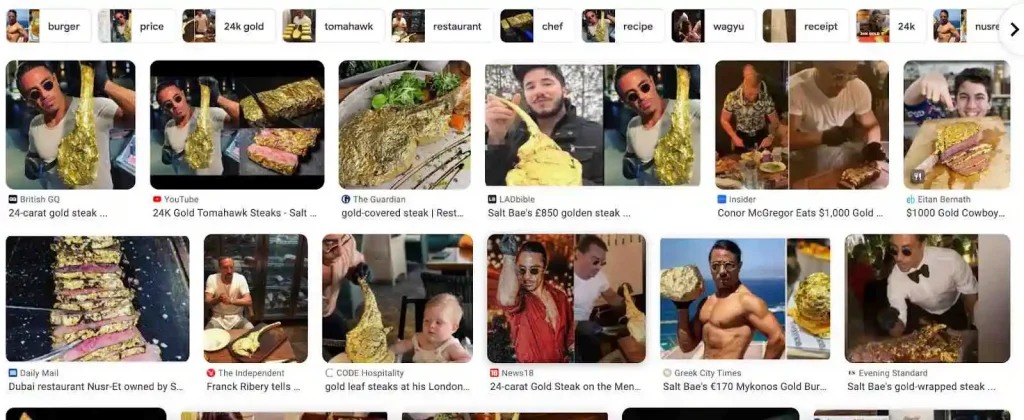
He’s got coverage in publications like The Guardian, The Independent, Daily Mail, and more for this golden steak. It’s a piece of marketing genius.
Anyone who eats the steak will invariably share images on social media too.
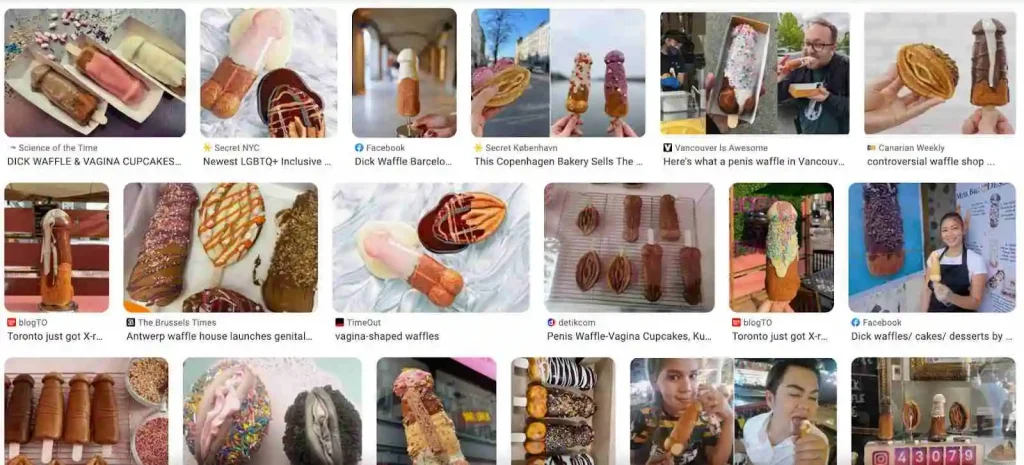
Another example of an eatery that leveraged viral marketing is La Polleria. They make waffles & cupcakes shaped like intimate body parts. It’s eye-catching social media content.
The restaurant chain has leveraged this exposure to expand internationally.
Create a Great Website
A great website is vital for your restaurant’s online presence. It’s the first impression for potential customers, A great website is vital for your restaurant’s online presence. It’s the first impression for potential customers, showcasing your menu and ambiance with the use of a menu maker and also you can customize these amazing menu templates. You want the homepage to be eye-catching and mouth-watering. Use attractive visuals, either photos or videos, on the homepage.
Ideally, you should include social proof too. That might mean adding Instagram-style imagery to your homepage like this site does.
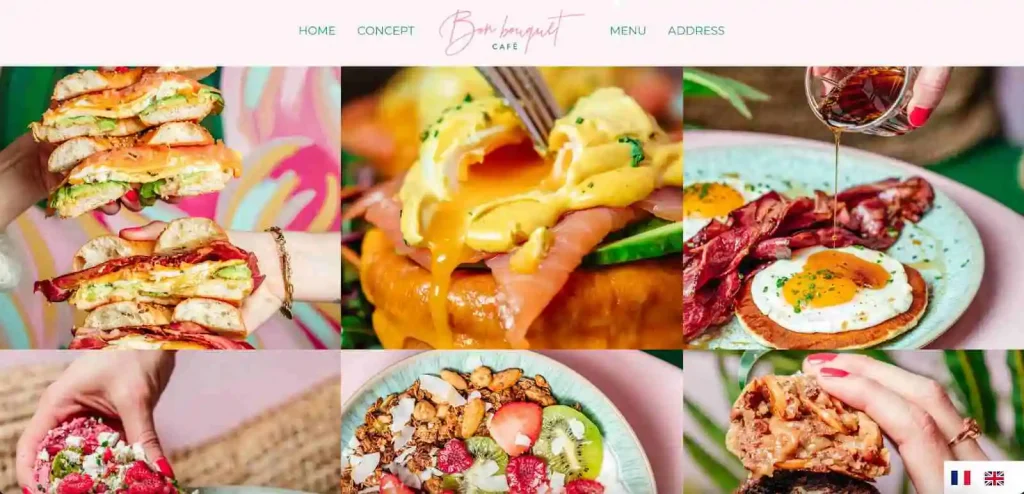
Your site should also showcase your brand. Use appropriate imagery and color schemes to highlight what makes your restaurant unique.
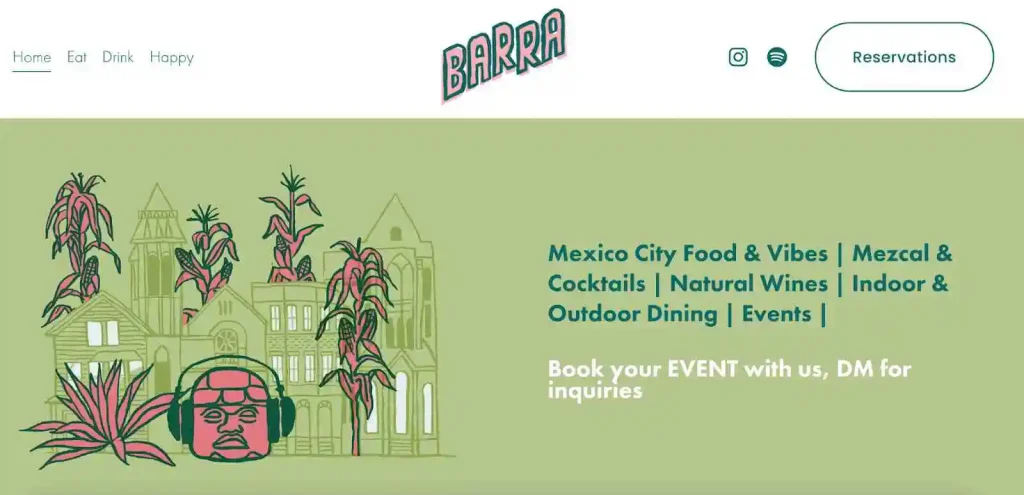
Finally, you need a simple reservation process. A simple reservation process enhances the customer experience, saving time and reducing booking abandonment. This convenience gives you a competitive edge in the fast-paced restaurant industry.
Plus, it helps manage seating efficiently, preventing overbooking or underutilization. Valuable data insights also enable you to optimize operations and marketing. In short, a user-friendly website with a reservation system is key to your restaurant’s success. Also, you can consider adding online ordering systems to complement your reservations, as this can simplify operations and encourage repeat business by offering customers more flexibility.
Utilize SEO for Local Search
Utilizing SEO for local search is a fundamental strategy for restaurant marketing. In a world where consumers turn to search engines to discover nearby dining options, ensuring your restaurant appears prominently in local search results is essential. Here’s why it matters:
- Boosts Visibility: Local SEO makes your restaurant more discoverable.
- Targets Relevant Customers: Attracts diners actively looking for local options.
- Competitive Edge: Ranks higher than competitors in local search results.
- Reviews Matter: Positive online reviews enhance local search visibility.
- Mobile-Friendly: Essential for on-the-go searches via smartphones.
To enhance your restaurant’s search presence through local SEO, optimize your Google My Business (GMB) profile. Ensure it’s complete and accurate, encouraging customer reviews and providing engaging visuals. Conduct keyword research and incorporate local keywords into your website’s content, making it more search engine-friendly.
Focus on mobile optimization for your website, as well as local link building through partnerships and citations from local directories to enjoy the benefits of link building. Cultivate online reviews and ratings, actively engage with your audience on social media, and implement schema markup for structured data. Consistency in your restaurant’s Name, Address, and Phone number (NAP) across all online platforms is crucial. Regularly monitor your website’s performance, keyword rankings, and analytics to refine your local SEO strategy for continuous improvement.
Investing in blogging is sensible too. This guide provides handy blog writing tips to follow to generate search rankings.
Email Marketing and Customer Engagement:
Email marketing plays a vital role in retaining restaurant customers by establishing ongoing communication. It allows you to keep your audience engaged, informed, and eager to return. To succeed in this, start by building a robust email list.
Collect emails through your website, in-house promotions, and events. Segment your list to send targeted content to different customer groups, such as new customers, loyal patrons, or those interested in specific cuisine types.
Craft compelling email campaigns and promotions that resonate with your audience. Share updates on menu changes, special events, or exclusive discounts. Personalize your emails by addressing customers by name and using dynamic content. By nurturing customer relationships through email marketing, you can keep them engaged and encourage repeat visits.
Loyalty Programs and Special Offers
Loyalty programs are a potent tool for restaurants, enticing customers to return. Start by clearly communicating the perks, such as earning points for every visit or gaining access to exclusive discounts or special events. Make enrollment effortless—offer sign-ups on your website and at the restaurant, ensuring customers can easily join.
If the focus is digital, use a platform like ClickFunnels or a ClickFunnels alternative to create custom landing pages for these offers. This is great for time-sensitive offers.
When crafting special offers and discounts, consider the diversity of your customer base. Examples include “buy one, get one free” deals for couples, personalized birthday discounts, or seasonal promotions tied to holidays or local events. To maximize repeat business through rewards, implement a tiered loyalty system where patrons unlock increasingly enticing benefits as they accumulate points or visits.
Promote these programs and offers through multiple channels, including email marketing, social media, and eye-catching in-house signage. You can cultivate a devoted customer following by demonstrating appreciation for your loyal customers and offering meaningful rewards.
Return customers are the key to the long-term success of your business.
Monitor and Analyze Your Marketing Efforts
Tracking and analyzing marketing metrics is crucial for measuring your restaurant’s marketing performance. It helps you make informed decisions and improve your strategies.
Use dedicated tools and software to monitor performance. Popular options include Google Analytics for website data, social media analytics platforms like Hootsuite, and email marketing software like Mailchimp.
Make data-driven adjustments to your marketing strategies based on what the metrics reveal. If certain promotions or channels are working well, allocate more resources to them. If some efforts aren’t delivering results, consider revising your approach. Continuous evaluation and adaptation lead to sustainable growth for your restaurant.
Summing Up
In the fiercely competitive restaurant industry, mastering effective marketing strategies is the linchpin for success. You need to get the basics right. That means serving delicious food in a nice ambiance. Once these building blocks are in place, focus on social media. An effective social media presence is the fastest way to grow your business.
Other important restaurant marketing strategies include creating a nice site, optimizing for local SEO, creating engaging content, and implementing customer-centric loyalty programs. They are the foundation of a prosperous restaurant business.
To excel, it’s essential to understand your target audience thoroughly. Utilize data-driven insights to refine your marketing efforts and ensure you attract the right customers who keep coming back for more.

